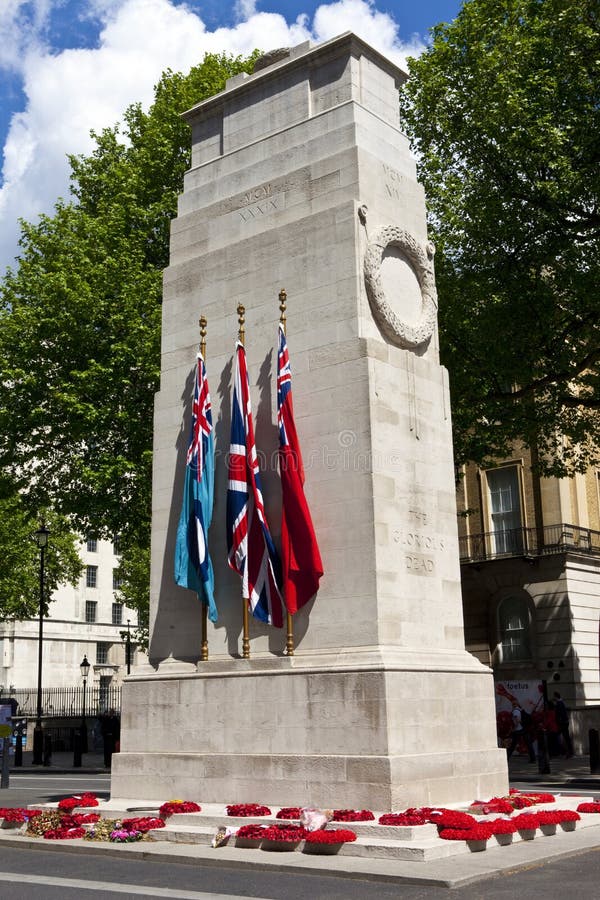


Madame Guérin sent Colonel Moffat (ex-American Red Cross) to Australia and New Zealand (and probably South Africa) afterwards as her representative. They were the first veterans of the British Empire (predecessor of the Commonwealth of Nations) to do so. After she addressed the Great War Veteran Association on 4 July, the group also adopted the poppy emblem as well as 'Inter-Allied Poppy Day' concept. After the 1921 Memorial Day in the US, Madame Guérin traveled to Canada. Madame Guérin's 'Inter-Allied Poppy Day' idea was also adopted by military veterans' groups in parts of the British Empire. In 1924, the Veterans of Foreign Wars patented the Buddy Poppy. organized the first veterans' Poppy Day Drive in the US, for the 1922 Memorial Day. Using French-made poppies purchased through her, the V.F.W. When the American Legion stopped using the poppy symbol in favor of the daisy, Veterans of Foreign Wars' members supported Madame Guérin instead.

Cotton and silk poppies were made in devastated areas of France by Madame Guérin, "The Poppy Lady from France" and the originator of Poppy Day for the widows and orphans of soldiers killed during the war She then campaigned to have the poppy adopted as a national symbol of remembrance.ġ921 British remembrance poppy. At a November 1918 YMCA Overseas War Secretaries' conference, she appeared with a silk poppy pinned to her coat and distributed twenty-five more poppies to attendees. In tribute to McCrae's poem, she vowed to always wear a red poppy as a symbol of remembrance for those who fought in and assisted with the war. She published a poem of her own called " We Shall Keep the Faith" in 1918. Moina Michael, who had taken leave from her professorship at the University of Georgia to be a volunteer worker for the American YMCA Overseas War Secretaries Organization, was inspired by the poem. The poem was first published on 8 December 1915 in the London-based magazine Punch. The poem was written by Canadian physician John McCrae on after witnessing the death of his friend and fellow soldier the day before. The poem is written from the point of view of the fallen soldiers and in its last verse, the soldiers call on the living to continue the conflict. The opening lines of the World War I poem " In Flanders Fields" refer to Flanders poppies growing among the graves of war victims in a region of Belgium. The next summer the soil, fertilised by 20,000 corpses, broke forth into millions of scarlet poppies." Ī Canadian remembrance poppy adorns a memorial with the words to " In Flanders Fields" at McCrae House. "During many months after," wrote the Earl of Perth to his sister (as quoted by Macaulay), "the ground was strewn with skulls and bones of horses and men, and with fragments of hats, shoes, saddles, and holsters. The Scots in Holland and Flanders: At Neerwinden, in 1693, the brigade again suffered heavy loss, and William was compelled again to give way before the white-coated infantry of France with the loss of 10,000 men. References to war and poppies in Flanders can be found as early as the 19th century, in the book The Scottish Soldiers of Fortune by James Grant: The red remembrance poppy has inspired the design of several other commemorative poppies that observe different aspects of war and peace. However, in Australia and New Zealand, remembrance poppies are most commonly worn on Anzac Day. Remembrance poppies in Commonwealth countries are often worn on clothing in the weeks leading up to Remembrance Day, with poppy wreaths also being laid at war memorials on that day. Remembrance poppies are most commonly worn in Commonwealth countries, where it has been trademarked by veterans' associations for fundraising. Madame Guérin established the first " Poppy Days" to raise funds for veterans, widows, orphans, liberty bonds, and charities such as the Red Cross. Inspired by the war poem " In Flanders Fields", and promoted by Moina Michael, they were first used near the end of World War I to commemorate British Empire and United States military casualties of the war. Remembrance poppies are produced by veterans' associations, who exchange the poppies for charitable donations used to give financial, social and emotional support to members and veterans of the armed forces. Remembrance poppies distributed by the Royal British Legion (top) and the Royal New Zealand Returned and Services' Association (bottom).Ī remembrance poppy is an artificial flower worn in some countries to commemorate their military personnel who died in war.


 0 kommentar(er)
0 kommentar(er)
